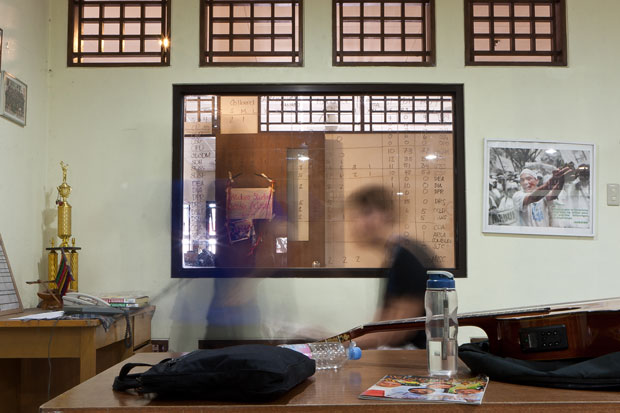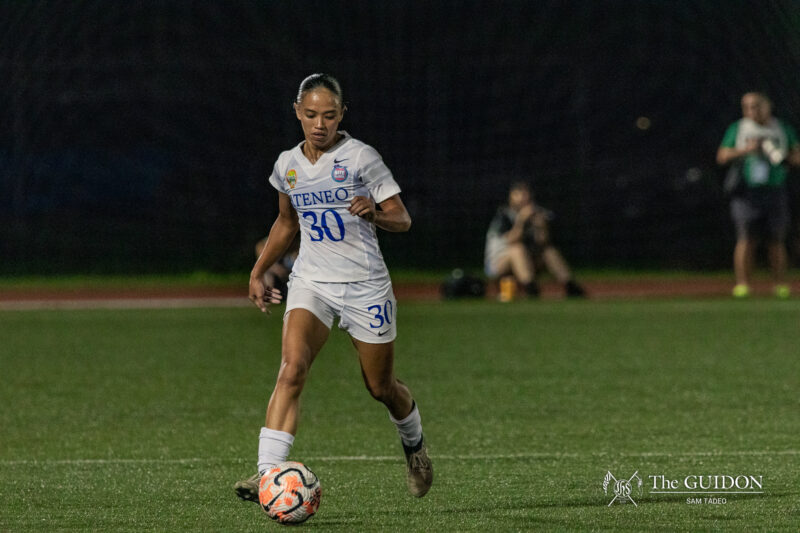At the center of all the debates, arguments and issues that dwell within the ambit of Ateneo student politics is a manuscript that dictates the hustle and flow of the student body’s actions, activities, and even conflicts. Indeed, it seems that no other document in the Sanggunian receives as much scrutiny and apathy at the same time as the student constitution.
“Now that you’ve mentioned it, I didn’t actually know that we have a constitution,” remarks Jacob, a junior student who asked not to be named, when asked for his thoughts on the charter. “It’s kind of weird, [isn’t it]? I’m this close to graduating next year and ngayon ko lang nalaman that we actually have [a constitution].”
Whether he knows it or not, though, the constitution plays a very important role in his life as a student.
A cyclical history
The entire debate on charter change is nothing new in the Loyola Schools. The past few years have shown that the issue has been caught up in a seemingly never-ending cycle of births and rebirths. In the last decade alone, the student body was served with the spectacle of three distinct constitutional commissions that sought to overhaul the political system on campus. What’s interesting to note is that this all happened within the timespan of three consecutive years—from 2003 to 2005.
It was in November 2005 that a new constitution was ratified through a plebiscite. It is this charter that is enforced up to this very day.
One difference that sets the 2005 Constitution apart from its predecessors is its very name. In order to categorically state the relation of the document to the lives of Ateneans, the 2004-2005 Constitutional Commission opted to designate it with the official title, the “Constitution of the Undergraduate Students of the Ateneo de Manila Loyola Schools.”
As explained in the charter’s annotated version, “The new name reflects each and every Loyola Schools student’s ownership of this document and its contents.”
Another key feature of the 2005 Constitution is the fact that its framers were writing it with a prescription that they had to integrate it with what was then another new document, the “Magna Carta of Undergraduate Student Rights.” It even came to a point that the option of eliminating the Students’ Bill of Rights from the charter altogether was raised.
The 2005 Constitution also introduced the separation of powers into the structure of the political system. It emphasized the separate existences of a central government, as manifested in the Central Board (CB), and of local government units, which took form in the School Boards.
In 2007, another thrust for reform was sought by the student government. However, the failure of the corresponding plebiscite prevented it from pushing through. A short hiatus in charter change efforts followed, but by 2011, there was renewed interest in reform.
It’s been more than six years since amendments to the constitution were successfully ratified, and the student political landscape of the Ateneo today is clearly different from that of 2005. The presence of four different political formations on campus today—in contrast to the politics of loosely organized students back in 2005—has perhaps rung the bell for a different narrative of charter change this time around.
Since November 18, 2011, more than six years after the ratification of the current charter, a series of Sanggunian meetings have produced key points for reform. Chief among these include the institution of a House of Representatives, increased representation of the different sectors of the student body, and the streamlining of power for the Executive Coordinating Assembly.
Multi-partisan consensus
Despite the fact that fierce partisanship has put much friction between the different student political formations of the Ateneo, most of them see eye-to-eye on the fact that the constitution has to be amended.
Movement for Ignatian Initiative and Transformative Empowerment (Ignite) founding member and Vice President for Strategy AJ Elicaño believes that one issue that plagues the current constitution is the document’s lack of proper “grass roots representation.”
“Without proper delineation of powers, positions like the Top Four can stranglehold votes and policy at the expense of the batch Central Board Representatives, who are the specific elected representatives of their batches,” he argues. “The Constitution as it is now puts too much primacy on top officers, without leaving enough room for those closest to the student body, or for the students themselves.”
Meanwhile, Christian Union for Socialist and Democratic Advancement (Crusada) Secretary-General Bian Villanueva says, “I think there is a pressing need to amend the constitution, and to reimagine the institutions and the arrangements among those institutions. The current constitution is flawed in terms of empowering representatives and bringing the Sanggunian closer to the student body in terms of decision-making processes.”
School of Science and Engineering Sophomore CB Rep Cate Sison agrees. “You could say that there is a pressing need to amend the current constitution because it hasn’t been formally amended since 2005, and with that big amount of time between now and 2005, then it is inevitable that there will be things that will have to be amended to accommodate the needs of the current generation of Ateneans.”
Expanded representation
All student political groups seem to agree as to what changes should be made. Leaders from these groups are in consensus that there is a need to establish a lower legislative house, as part of efforts towards the decentralization of powers away from the top rungs of the hierarchy.
Villanueva, for example, believes that there must be a “permanent and institutionalized House of Representatives with concrete, law-writing and reactive law-repealing legislative authority [and] provisions that encourage more transparent financial and legislative processes by invoking the spirit of broad-based stakeholdership.”
Alliance of Student Leaders President Alvin Yllana echoes the same sentiments. He believes that the new constitution must emphasize the separation of powers among the Sanggunian’s different branches of government.
“I really believe in decentralizing the power of the Central Board and giving more power to the Executive Coordinating Assembly. By [removing] the executive nature of the Central Board and making it purely legislative, projects and activities can be focused on more,” he says. “By doing so, the quality could improve and quantity of projects could be increased, depending on the current officers.”
Elicaño, however, is quick to point out some concerns. “I think the proposed amendments are necessary but not sufficient. Formalizing the House of Representatives is a crucial step, for sure. But the changes required to truly make a grassroots-oriented, student-centric Sanggunian will go beyond this constitutional convention, because not enough yet realize how important it is to give people opportunities to directly involve themselves.”
Risk of failure
However, even with the virtual unanimity in the call for constitutional reform, it is nevertheless an ironic possibility that those who are behind these efforts may very well be the cause of charter change’s own demise. There is a chance that this year’s round of discussions may end up with the same fate as the failed attempts of the past.
Student participation is often an endeavor in campus politics, but the push to get reform out of an increasingly polarized student body borders on the difficult. Consider, for example, what has happened just over the last year. In February of 2011, the presidential administration of Rob Roque had the very same hopes of pushing for charter change.
The Sanggunian of SY 2010-2011 had scheduled two separate sessions for the different sectors of the student body to engage in dialogue regarding charter change. Both meetings were cancelled, due to their failure to achieve quorum. Roque had hoped for the ratification of the supposed amendments before the end of his term.
Although a renewed interest in campus politics has ostensibly pushed this year’s attempts further down the road than previous efforts, there’s still that danger that too much bureaucracy would lead to too little action.
In fact, the entire process has been caught behind schedule. A plebiscite was supposedly slated for December 2011. It did not happen. It is now slated to take place alongside this year’s Sanggunian General Elections.








